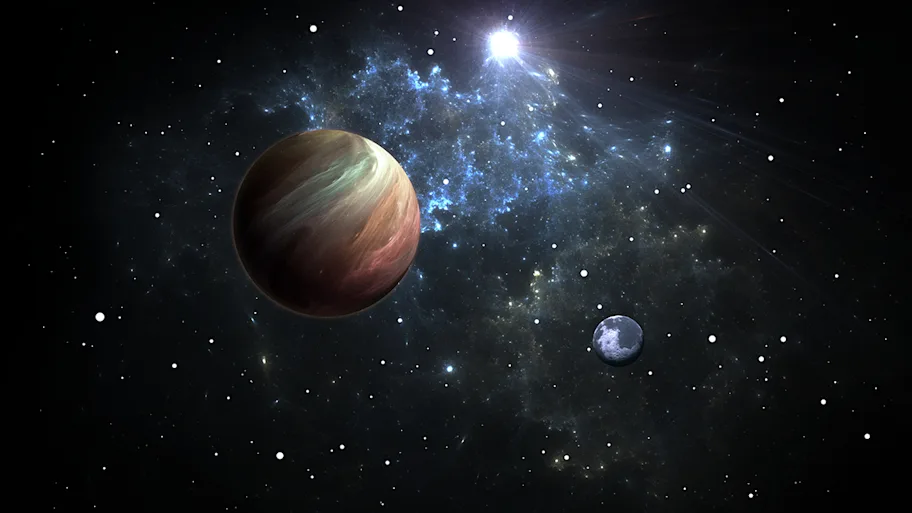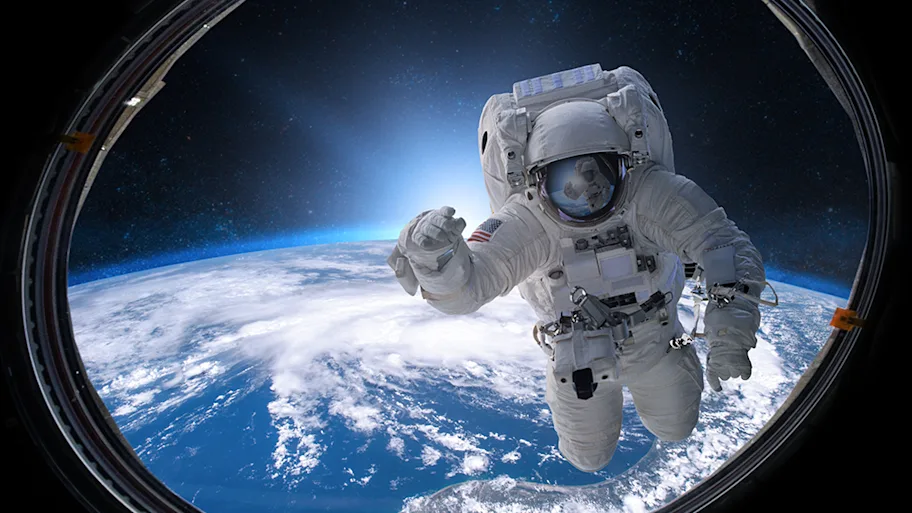
- Science News
- Featured news
- Why understanding human evolution on Earth will be absolutely essential for any future deep-space colonies to survive and thrive
Why understanding human evolution on Earth will be absolutely essential for any future deep-space colonies to survive and thrive
By Lee G Irons, Norfolk Institute, and Morgan A Irons, Cornell University

Photo of Lee and Morgan, Credit: Lee Irons and Morgan Irons
Is human migration into space inevitable? Is it based on facts, or is it based upon a belief in human exceptionalism?
These are some of the questions explored by Lee and Morgan Irons in a recent article published in Frontiers in Astronomy and Space Sciences, asking whether humans’ evolutionary connection to Earth requires us to inhabit space the same way we do here. Lee is a physicist, engineer, and the executive director of Norfolk Institute. Morgan is an astro-ecologist and PhD candidate at Cornell University, a Carl Sagan Institute Fellow, a US National Science Foundation Graduate Research Fellow, and a Norfolk Institute Fellow. In this latest guest editorial, they explain why – and why not – space settlement might be possible.
How can such a feat be accomplished? Is it just a matter of leveraging the resources of a billionaire and the capital power of the economically developed Earth to ship the materials to Mars to build a city with a dome, followed by pressurizing the dome with an Earth-like atmosphere, and spreading biosolids (ie, sterilized human fecal waste) and seeds? Will a sustainable, Earth-like ecosystem just ‘take hold’ anywhere we choose to ‘plant’ ourselves? What would it take to establish a sustainable city in space, with its humans and human civilization?
In 2019, we formed Norfolk Institute with the vision of enabling human life on Earth and in space. We started by mustering a team of government, university, non-profit, and industry stakeholders to support research efforts led by Morgan on the effects of gravity and rocket launch and return forces on natural Earth soils and biochar growth media. Morgan, with the support of the team, conducted experiments on the International Space Station and a Blue Origin parabolic launch. Understanding how gravity affects soil will have applications to both Earth and space.

A Mars research station in Utah, US. Image: Shutterstock.com
Earth-like ecosystems and infrastructure
Morgan’s study of soil in space is toward the goal of establishing a sustainable human presence in space. We began investigation of the question of human sustainability in space with our first paper in Frontiers in Astronomy and Space Sciences, ‘Terraform Sustainability Assessment Framework for bioregenerative life support systems’.
A quantified measure of sustainability requires that such an off-Earth human habitation be able to maintain stable levels of all resources utilized by humans, at least as stable as Earth. Accomplishing the development of such capability is known as terraforming.
Dependent on Earth
In our new hypothesis and theory paper, ‘Pancosmorio (world limit) theory of the sustainability of human migration and settlement in space’ we address the many questions that we set out in this editorial. For living in space, our theory states that a self-restoring basal (ie, natural) ecosystem with capacity and organization like what humans have on Earth must first be established before a human augmentational ecosystem (ie, technology, infrastructure, and society) can be sustained.
The basis for this theory is the science of ecological thermodynamics developed over the past 100 years and a new concept we call the semi-reversible heat engine cycle. A major conclusion of the theoretical development is that humans and all Earth-life have evolved to be dependent on conditions that are only naturally available at one place within our solar system, and that is Earth.
The human augmentational ecosystem requires a self-restoring basal ecosystem that utilizes dissipative structures functioning as semi-reversible heat engine cycles. Dissipative structures are a coalescence of materials into forms that enable the capture and movement of energy through the ecosphere in a way that builds up high levels of stored energy, also known as exergy. The formation of a dissipative structure requires the presence of a conservative force, such as the gravitational force involved in our water and air cycles (eg, weather) or the electrochemical force involved in the geochemistry of water and soil and the biochemistry of life.
The self-restoring basal ecosphere of Earth to which all Earth life is evolutionarily connected is sustained by the self-restoring order of the gravity well of Earth, the capacity of the surface area of Earth and a continuous inflow of power from the Sun at exactly one astronomical-unit distance, and the organization of accumulated exergy in an ecosystem network of living things evolved from the material resources available on Earth.
It is this very same evolutionary connection that makes Earth life so successful on Earth. Applying abductive reasoning, the theory postulates that this same success can be duplicated in space at any location where the same conditions can be established. Unfortunately, there is no other place in our solar system that is like Earth, regarding these conditions.

Image: Shutterstock.com
Human life on Earth and in space
With the publication of the Pancosmorio theory, Lee has launched new initiatives and formed stakeholder teams to research and develop designs for space habitation systems that solve the problem of duplicating the self-restoring order, capacity, and organization of Earth.
The goal of such designs is to establish the gravitational dissipative structures necessary for self-restoring order, as described in the theory. There is the possibility that using a balanced sustainability approach to bootstrap a location into self-restoring order using artificial gravity and a sufficiently large soil-and-plant-based ecosystem could enable the establishment of a sustainable human settlement in space. Such a feat would still require similar power levels to the solar insolation available on Earth, as well as a sustainable supply of material resources. And the area requirements are large indeed.
The Pancosmorio theory can also be applied to the establishment of more sustainable human living on Earth. One of our current Earth projects involves the challenges of food insecurity in the extreme environment of southern Alaska. The problems associated with extreme-environment agriculture have many similarities to space.
We are assisting native clans in establishing a localized agricultural circular economy. Norfolk Institute operates as a non-profit, specializing in cradle-to-deployment execution that involves the assembly of a team of stakeholders from scientists to philanthropic, governmental, and non-governmental organizations to commercial businesses and end users all along the value stream of a local agricultural economy, just as we do with our space research. Assembling such teams better assures implementation of research in market solutions.
All of Earth life is evolutionary connected to Earth and space. The Pancosmorio theorypostulates that sustainment of human life either on Earth or in space depends upon understanding how these connections enable life.
If you have recently published a research paper with Frontiers and would like to write an editorial about your research, get in touch with the Science Communications team at press@frontiersin.org with ‘guest editorial’ in your subject line.
REPUBLISHING GUIDELINES: Open access and sharing research is part of Frontiers’ mission. Unless otherwise noted, you can republish articles posted in the Frontiers news blog — as long as you include a link back to the original research. Selling the articles is not allowed.






